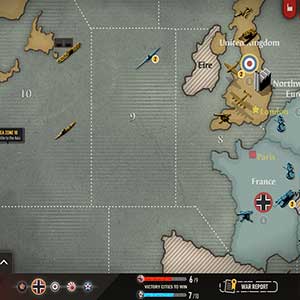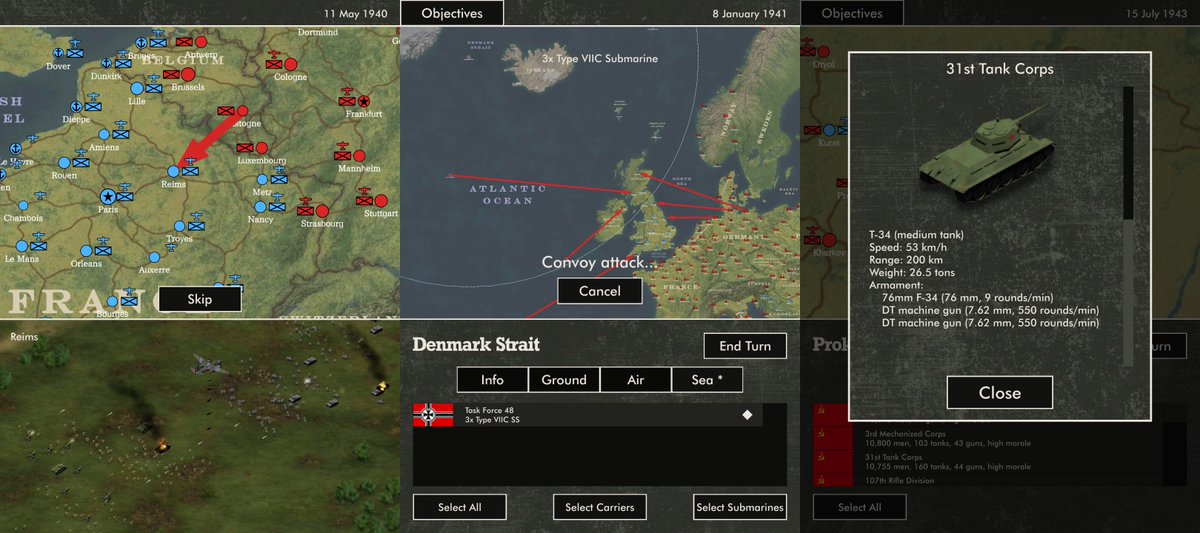

Everything from headquarters to supply depots can "pack up" and relocate, meaning that you can fall back to avoid total annihilation. This is captured by the mobile nature of virtually every structure in the game. And for Axis & Allies, TimeGate's Ian Klimon told us that the developer wanted to use the Kohan-style gameplay to capture the ebb and flow of World War II warfare. TimeGate was responsible for Kohan and its upcoming sequel, Kohan II: Kings of War. Parachute infantry can seize strategic objectives, but they'll be overrun easily without support.Īt this point, Axis & Allies' gameplay may remind you of that found in the acclaimed Kohan real-time strategy games, and there's a good reason for this.
Axis and allies computer game regiment morale ui full#
If you can get the survivors back into the line of supply, the regiment will reconstitute back to full strength. The regiment's battalions will go into combat together, and even if individual battalions are wiped out, the regiment survives if a single battalion escapes destruction. This infantry regiment is treated as a single unit, so you don't have to click on each battalion to give it orders. An infantry regiment is typically composed of about six or seven battalions of foot soldiers, each of which is represented in the game by a single man (appropriately, a vehicle battalion is usually represented by a solitary half-track or tank). As soon as you get that up and running, you can begin to churn out infantry regiments. When you start the game, you begin with just a corps headquarters, and one of the first things that you can build is an infantry division HQ. Instead of building hundreds of individual units like you would in a traditional real-time strategy game, you instead build regiments, each of which can be composed of between four to seven battalions. The real-time strategy in Axis & Allies is built around the idea of headquarters and regiments.

However, while this may sound like the Total War games, you won't take direct tactical command of forces on the battlefield, because the real-time strategy portion of Axis & Allies will still require you to manage resources and build a base. Instead of auto-generating results, you can drop down into the real-time strategy portion of the game to directly take command of your units on the battlefield. As such, this mode closely resembles the popular Axis & Allies board game, though it's not a straight translation by any means.Īt the heart of Axis & Allies, though, is the real-time strategy game that kicks in whenever opposing units meet on the map. You can play Axis & Allies entirely from this mode by simply moving your units around the map and auto-generating the results of battles. In this turn-based mode, you're presented with a map of the world. At the highest level, there's the metastrategy game. There are actually several different games in Axis & Allies. Furthermore, you'll have a general to lead your armies, including such real-life figures as Patton, Zhukov, and Rommel. In Axis & Allies, you'll play as one of the major combatants of the war, ranging from the United States, the United Kingdom, the Soviet Union, Japan, and Germany. These Soviet troops try to defend their base against an assault.

/cdn.vox-cdn.com/uploads/chorus_asset/file/5922351/AandA.0.jpg)
We had the opportunity recently to play an early version of Axis & Allies and quickly discovered what Atari and developer TimeGate Studios have in mind. So we were intrigued when Atari announced it was working on a real-time strategy version of Axis & Allies, the popular World War II game franchise. And, let's face it, World War II remains a hot item in popular culture. World War II tends to be a fertile setting for real-time strategy games due to the epic scale of the conflict, where a major battle could easily feature tens of thousands of troops and thousands of tanks.


 0 kommentar(er)
0 kommentar(er)
